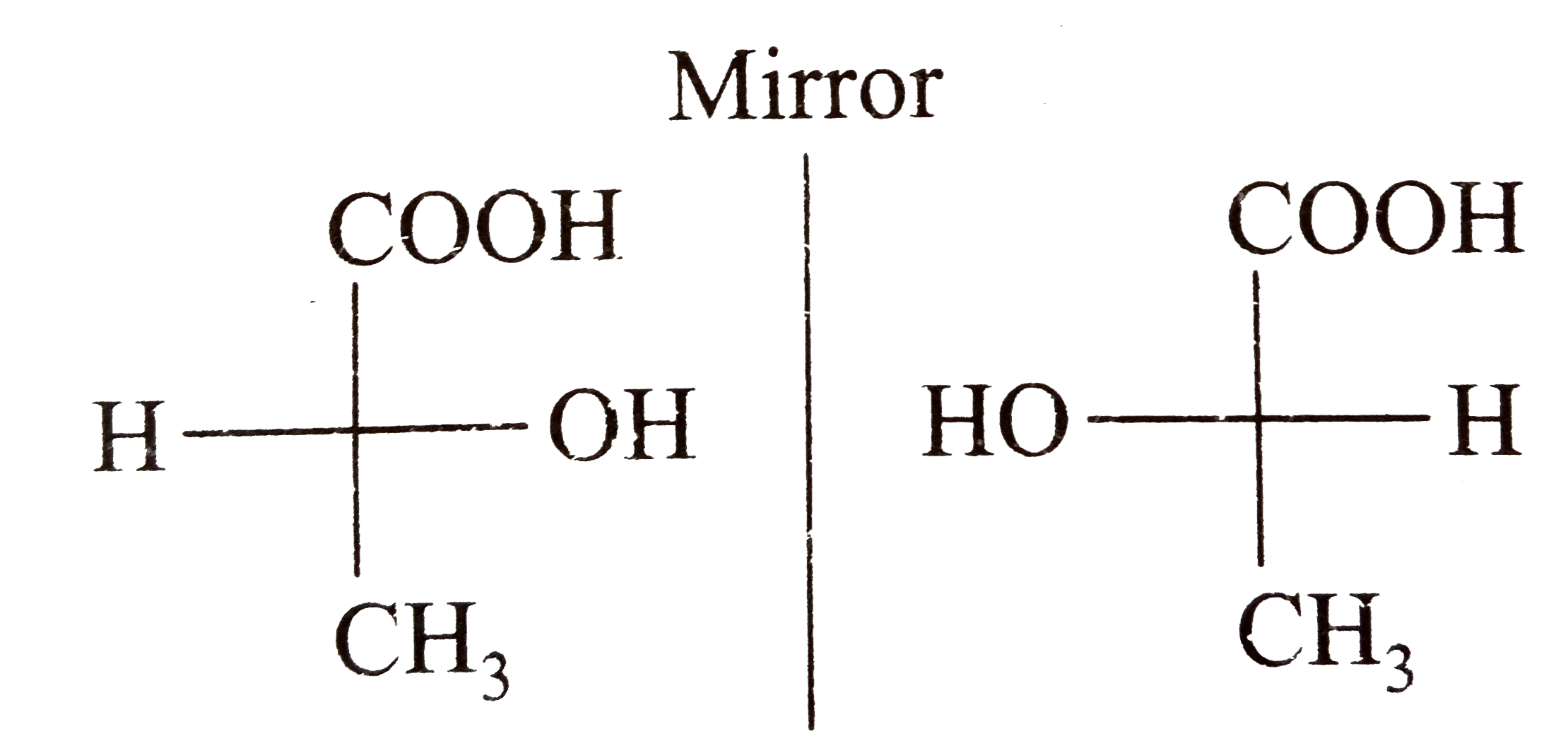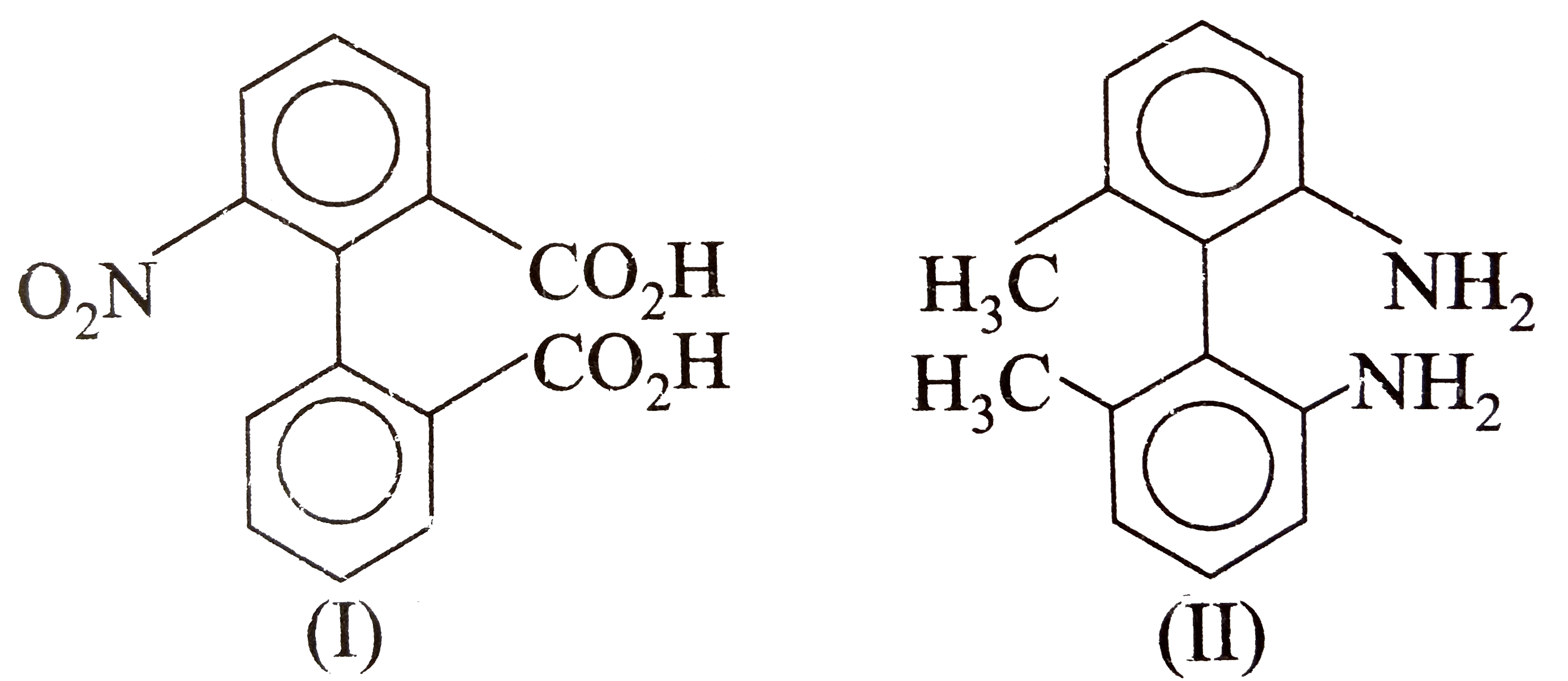Two possible stereo-structures of CH3CHOHCOOH, which are optically active are called
A
enantiomers
B
mesomers
C
diastereomers
D
atropisomers
Video Solution
Text Solution
The correct Answer is:A
Molecule of the given compound, CH3CHOHCOOH, contains one chiral carbon. Thus, it exists in two enantiomeric forms, which are optically active

If at least three of the positions (2,2',6 and 6') in bipheny1 are occupied by sufficiently large groups, free rotaiton about the single bond joining the two pheny1 groups is no longer possible, provided each ring has no vertical plane of symmetry, this restricted rotaiton gives rose to optical activity due to the moleucle being a symmetric as a whole.
For example, 6-nitrobipheny1−2,2'−dicarboxylic acid (I), and 6,6'−diamino2,2'−dimethylbipheny1(II), have been resolved:

If the substituent gorup is large enough, then only two groups in the O−and O−positions will cause restricted rotation. For example,bipheney1,2,2'-disulphonic acid (III) has been shown to be optically active.

The cause of the restricted rotaiton is mainly due to the steric effects o fthe groups in the O−and O'−positions. This type of steroisomerism, arising from restricted roattion about a single bond the wher the steroisomers can be isolated, is called atropisomerism, the isomers are known as atropisomers.
|
Topper's Solved these Questions
Similar Questions
Knowledge Check
Two possible stereostructures of CH3CHOH.COOH, which are optically active, are called:
ADiastereomersBAtropisomersCEnantiomersDMesomersTwo possible stereostructures of CH3CHOH.COOH, which are optically active, are called:
AEnatiomersBMesomersCdiastereomersDAstropisomersTwo possible stereo-structures of CH3CHOHCOOH, which are optically active are called
AatropisomersBenantiomersCmesomersDdiastereomers
